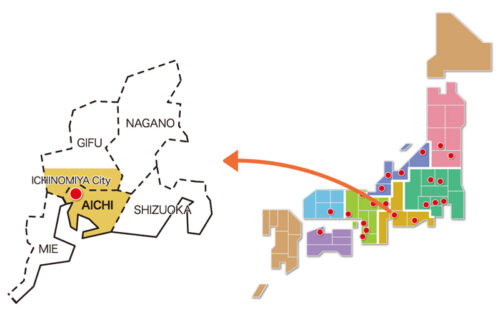Bishu Region

Sustainable wool fabrics
The name ‘Bishu’ for the region derives from the commonly applied antient appellation ‘Owari Province’ and refers to the region around Ichinomiya City in Aichi Prefecture producing wool textiles. Indeed, it is the largest wool producer in Japan, contributing around 80% of domestic wool textiles and retaining a strong competitive advantage with its integrated production processing systems that handle the entire process on site, from yarns to dyeing and finishing. Work to accommodate newly developed products is also underway, by collaborating with other textile regions, including Hokuriku.
Activity in this region dates all the way to the Yayoi period (ca. 300 BC - 300 AD). Pottery emerging from the ancient ruins of that period with fabric grains and woven textures hint at the use of hemp fabric during that era. Moreover, it is known that silk fabric was already in production as early as the Nara Period (710-784). And while the next area of focus was initially the handling of cotton fabrics, when cultivating cotton became difficult during the Meiji Period (1868-1912), the decision was finally made to produce wool textiles. Wool itself is biodegradable and thus sustainable by nature. Its many other advantages include heat retention, water repellency, flame-retardancy and deodorising qualities. It is used to make long-lasting clothing and thus epitomizes ethical fashion.
